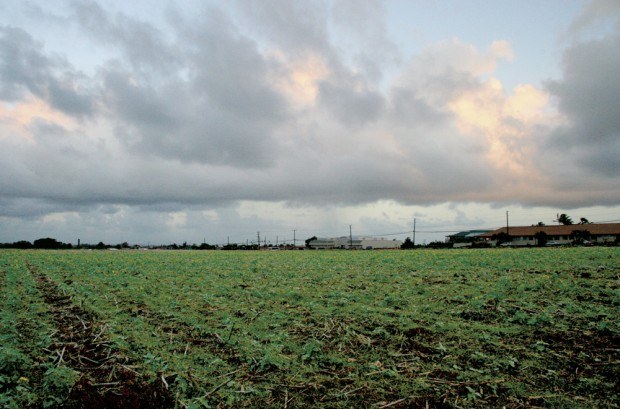LIHU‘E — On one side of the table sit consumers and the right to know what they are about to eat. On the other side sits an increasingly dominant section of the food industry reluctant to spend money on labeling
LIHU‘E — On one side of the table sit consumers and the right to know what they are about to eat. On the other side sits an increasingly dominant section of the food industry reluctant to spend money on labeling its products with three letters: GMO, the acronym for genetically modified organisms.
With the issue on the table on Wednesday, the Kaua‘i County Council decided to put it through its Intergovernmental Relations Committee this week, rather than just include the proposal to label GMO foods statewide in the Hawai‘i State Association of Counties 2012 Legislative Package.
Some of those who spoke against labeling GMO products said producers of non-GMO foods already have a choice to label their products.
Labeling GMO products would have a tremendous impact on food retailers, said Scott McFarlane from Dow AgroSciences said on Wednesday, because “a significant share” of what you can find in a store has some sort of GMO in it, from the ketchup to the beef.
About 94 percent of soy and 88 percent of corn — grains used in livestock feed — produced in the United States is genetically modified, according to Pioneer scientist Sarah Stian, who also opposed to labeling GMO products.
On the other side of the spectrum, Kaua‘i resident and GMO opponent Jeri DiPietro said not requiring GMO labeling creates an undue burden on organic foods producers.
Farmers Jerry Ornellas, from the Hawai‘i Farm Bureau, and Roy Oyama, from the Kaua‘i Farm Bureau, also opposed to labeling GMO products, saying it would involve expensive permitting, testing and enforcement.
Those opposed to labeling were also afraid that a GMO label would discourage consumers to buy the product.
Mark Phillipson, from Syngenta, said food safety should be the crux of the matter, not labeling. There has not been a single problem with GMO foods regarding safety, he said.
Phillipson’s claims of food safety are contested by many opponents of GMO foods.
Kaua‘i resident David Martin said he does not believe GMO foods are safe, and he cited Maui County District Health Officer Dr. Lorrin Pang, M.D., who recently visited the Garden Isle and spoke against GMO foods.
Different species
When Councilwoman JoAnn Yukimura asked about the differences between GMO and non-GMO plants, Stian said the different DNA composition of plants that look identical to the eye is what makes the plants distinct species.
But minutes later, after reminded by Councilwoman Nadine Nakamura that 21 countries and the European Union have some sort of mandatory labeling, and the Federal Drug Administration has not chosen to follow that route, Stian said it is “unnecessary to label something that is in effect the same product.”
One of the varieties of GMO corn has an added gene called Bacillus thuringiensis, a naturally occurring soil bacteria used as pest control.
Instead of spraying fields with Bt, corn is grown with it, reducing spending enormous amounts of BT in the fields, said Stian, adding that in the end, you either eat food sprayed with BT or food grown with it.
“What’s the difference?” Stian told Yukimura, who was concerned about eating a product that has a gene that kills insects.
DiPietro, however, had a different answer for Yukimura’s concerns.
“Bt used topically goes away in 24 hours,” she said.
DiPietro also said Bt, embedded in the plants’ DNA in high levels kills insects all right, but not just the unwanted ones: It also kills monarch butterflies and bees.
DiPietro and Harvest Edmonds, speaking as a consumer, said residents deserve the right to know what they are eating.



